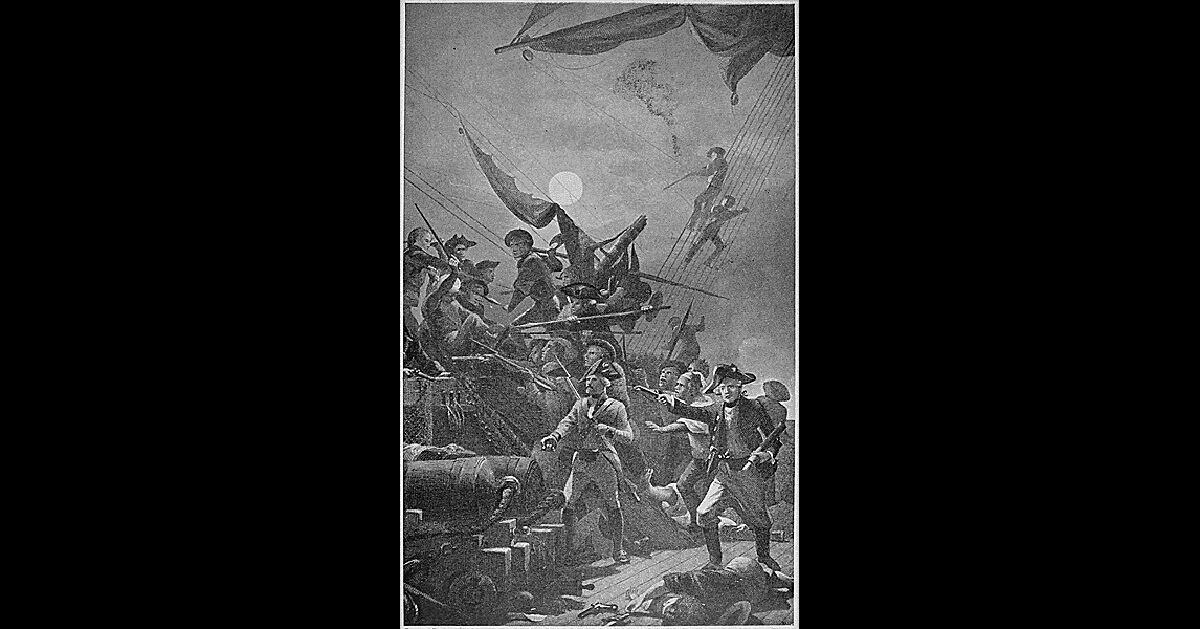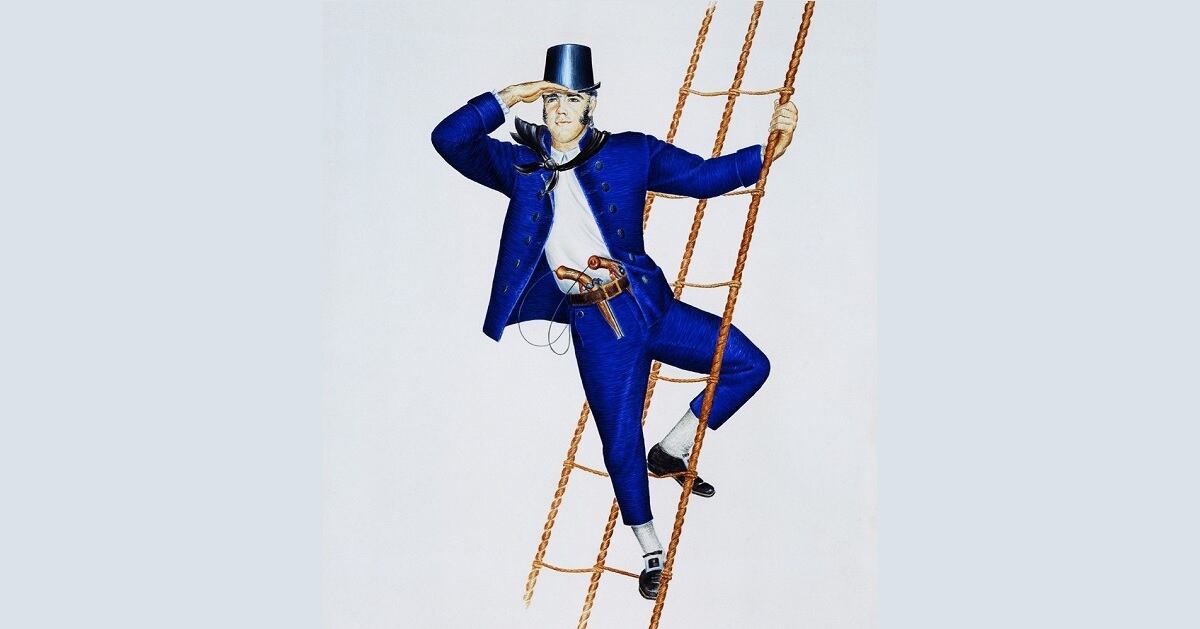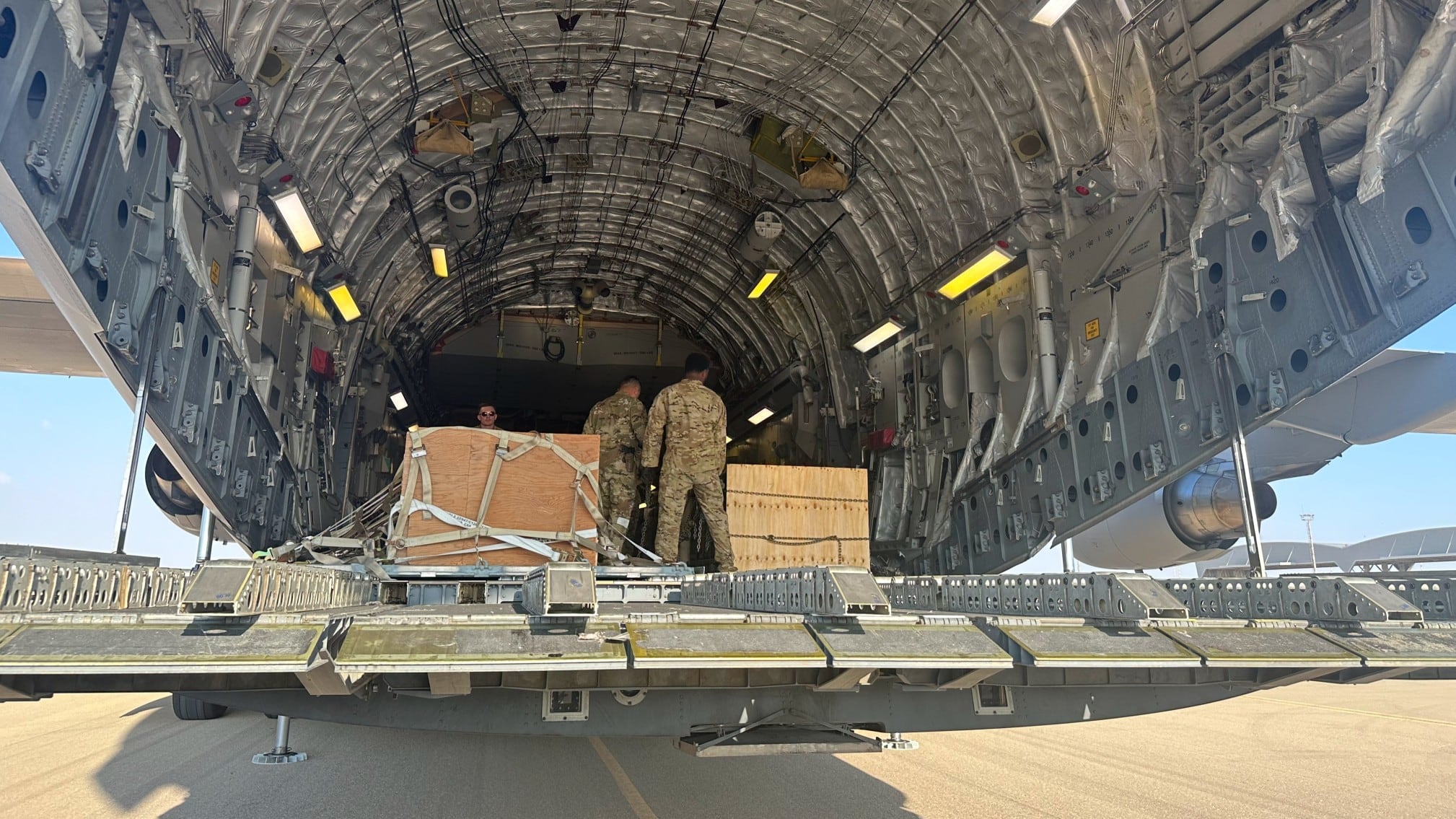On a warm August day in 1785, at the Merchants’ Coffee House in Philadelphia, an 8-year-old Continental Navy 32-gun frigate named Alliance was auctioned off for $26,000. When the auctioneer’s gavel came down, the Continental Navy ceased to exist.
Ten years before, on Oct. 13, 1775, the Continental Congress had passed a resolution establishing what is now the United States Navy with “a swift sailing vessel, to carry ten carriage guns, and a proportionable number of swivels, with eighty men, be fitted, with all possible despatch, for a cruise of three months. …”
After the American War of Independence, the U.S. Constitution empowered the new Congress “to provide and maintain a navy.” Acting on this authority, Congress established the Department of the Navy on 30 April 1798.
Today, the United States Navy stands unchallenged as the world’s most powerful maritime force. Because of its sailors, past and present, the Navy’s ability to project force above, on, and beneath the waves, control shipping lanes and dominate airspace over the world’s hotspots is without parallel.
And so today, we mark the Navy’s 246th birthday. The central theme of this year’s anniversary celebration and heritage week will be “Victory at Sea,” which encompasses the Navy’s efforts in battle during World War II in the Pacific Theater.
But its early American leaders would be astonished to see that their fledgling navy has become the world’s dominant naval force.
The nascent Continental Navy created at the outset of the American Revolution had its roots in early colonial America. Early English settlers to the 13 colonies were as much drawn to the sea as to the land. The sea was a principal means of transportation and colonists looked to the sea to provide their living; the sea was a barrier to their enemies and a marine highway to their mother country.
Shipbuilding and the timber business formed the principal industries of colonial America, supplying both local and home country maritime needs. The largest American towns — Boston, New York, Philadelphia, Baltimore — were all Atlantic seaports which developed professional seamen and the necessary ingredients for shipbuilding: warehouses, ropewalks, boat builder’s sheds, sail loft, and counting houses. All up and down the coast, new ships slid down the stocks almost on a daily basis.
In late 1775, the Continental Congress appointed a Marine Committee consisting of seven members, and gave it the mandate to organize a navy. Meeting each evening in a Philadelphia tavern, the committee struggled to agree on the most basic strategic and tactical questions.
Facing alone the naval might of Britain, the strategic options open to its members were to: defend the nation’s coastlines; protect convoys; prey on enemy commerce; or all of the above.

The committee audaciously chose all of the above. In practice, the new navy was virtually powerless to do anything other than prey on enemy commerce. Constructing a fleet of 64- and 74-gun ships to face the main battle fleet of Great Britain was out of the question. It had limited financial resources, no administrators, few experienced officers and not least of all, the absence of fighting ships. However these issues did not dissuade the committee.
During the first three years of war, financier Robert Morris — who sometimes for expediency advanced his own funds, often without recompense — carried out most of the committee’s work. A small squadron of merchantmen were converted into warships and placed under the command of Eseks Hopkins, a merchant skipper with no naval experience. In December 1775, the committee authorized the construction of 13 light frigates rated between 24 to 32 guns each.
Building, arming and fitting out the frigates was an enormous challenge for 13 colonies that had no naval yards, no factories to produce ordnance (Britain had forbade the manufacture of heavy cannon in the colonies) or supplies like hemp and sailcloth. Even deciding which colonies were to receive contracts provided an early glimpse of pork-barrel politics.
Those frigates that managed to get to sea were often so poorly equipped that they were forced to return to port for repairs. But despite these defects, their design provided a valuable apprenticeship for a naval architect of future distinction, Joshua Humphrey. Several frigates such as the Confederacy were notable designs, heavier than comparable enemy frigates and much admired by the British.
In a protracted conflict between vastly unequal forces, the Continental Navy inevitably succumbed: of the 13 frigates ordered, two were never completed, two were scuttled when the British captured Philadelphia, one was set afire by its crew, one blew up in battle, and the remaining seven were captured and taken into the British navy.
Despite its record, the Continental Navy produced several naval heroes, the most famous being John Paul Jones, and several promising young officers, including Thomas Truxtun and Edward Preble. At war’s end, only two major Continental warships remained, the frigate Alliance and the first American ship of the line, America.

But ship losses were only one measure of the Continental Navy’s performance: fighting the Revolution forced Britain to commit major fleet assets to North America to battle the French navy, while its merchant marine suffered considerable losses and escalating insurance rates from the depredations caused by American privateers and navy ships.
A Navy is born 1783-1803
With the end of the Revolution, American political leaders and merchants looked for the resumption of shipping and trade in England’s West Indian colonies and expansion into new world markets. However, England, still smarting from defeat and desirous of rebuilding its own merchant fleet, passed a measure in 1783 barring American ships from entering any West Indian port.
The closing of this market, which had prior to the Revolution consumed two-thirds of American food exports, had devastating results for the economy of the young republic. But England’s trade restrictions had a deeper undertone beyond revenge. They were based on a fundamental understanding that sea power ensured the prosperity and security of England’s remaining dominions.
Ironically, it was revolutionary France, America’s ally a few short years earlier, that posed the first test for the new federal navy. While the democratic American public initially approved of the reforms taking place in Paris, opinion turned when reports filtered back of wholesale killings of men, women and children simply because they belonged to the clergy or aristocracy, or were supporters of those classes.
In March 1794, Congress by a narrow vote authorized the country’s first naval act, directing the construction of six frigates, four 44-gun, 24-pounder frigates and two smaller 36-gun frigates for the then-colossal sum of $688,888, an amount equal to nearly 8 percent of government revenues. But a codicil in the act required that construction be halted in the event of peace with Algiers, the most militant of the Barbary States.

By 1797, President John Adams faced an intolerable situation with revolutionary France. French warships and privateers were preying on British and American merchantman and by mid year, had taken 300 American ships. Congress, under pressure from Adams, finally voted to finish three of the six frigates closest to completion, and then established a Navy Department. By 1798, the final bill to complete the six frigates totaled $2.5 million, but the savings in insurance costs to American merchants that year was estimated at $8.6 million — a strong financial argument for the new navy.
Adams, always a shrewd judge of character, appointed Benjamin Stoddert, a Revolutionary War cavalry major, as the first secretary of the Navy. Stoddert proved to be an able secretary who quickly increased the navy to a fleet of 54 ships that within three years had captured 94 French ships. During this so-called “quasi war,” the frigate Constellation under Thomas Truxtun earned the first laurels of the federal navy by defeating two French national frigates.
Barbary pirates
While peace with England removed the threat to American merchant ships, it also left them without the protection provided by the Royal Navy prior to the war. General opinion held that the army, together with the French navy, had won the war with England.
In retrospect, the uselessness of the Continental navy and the enormous expense of maintaining a fleet dissuaded the republic’s leaders from investing in a new navy. At the same time, though, the early problems afflicting President George Washington’s administration were the piratical depredations by a collection of Ottoman states known as the Barbary States.
Situated on the North African coast, the Barbary States — Morocco, Tunis, Algiers and Tripoli — had for centuries preyed on merchantmen, especially from “infidel” (i.e., Christian) nations lacking the will to pay sufficient tribute or a navy to protect its maritime trade. Without the protection of the Royal Navy, the Barbary States began to seize American ships, and enslave or kill their crews. The protests raised by American shipping interests gradually prodded President Washington to realize he must somehow replace the protective umbrella of the Royal Navy.
Under Thomas Jefferson’s administration, the Barbary Pirates continued to be an issue that the new republic could no longer avoid or afford. The first squadron sent by Jefferson in 1801 was commanded by an unimaginative Richard Dale and accomplished nothing. The second command, initially offered to Thomas Truxtun, was commanded by an unaggressive Richard Morris, who achieved little, and was dismissed from the service. For the third squadron, Jefferson finally found his man: Edward Preble.
Mentored under Truxtun, Preble immediately sought to take the conflict to the Barbary States, and in the process provided leadership and inspiration to the navy’s future commanders Stephen Decatur, Isaac Hull, Charles Stewart and William Bainbridge.
When Bainbridge’s command, the 36-gun “subscription” frigate Philadelphia — paid for by the citizens of that city — grounded on an uncharted reef under the guns of Tripoli harbor and was captured by the Tripolitans, it was Preble who authorized a daring scheme. Under the command of Lt. Decatur, the captured ketch Intrepid, manned by an all-volunteer crew, boarded and burned the frigate and made good their escape without loss of life.
In June 1805, with the pirate menace subdued by the emerging American navy, a treaty advantageous to the United States was signed with the Bashaw of Tripoli.

It was in the crucible of war with the Barbary States and the quasi-war with France that the fledgling American navy was shaped into a fighting force through the efforts and leadership of Truxtun and Preble.
Free trade and sailors rights
In the decade leading up to the War of 1812, Jefferson pursued a controversial naval policy known as the “gunboat navy,” more notable for its austerity than its usefulness. No aspect of Jefferson’s naval policy has received as much attention or controversy as his decision to favor building a fleet of small gunboats to patrol harbor entrances, as opposed to ocean going warships. This policy, which was defensive in nature and reflective of anti-navy politics, was poorly conceived and hampered the development of the American blue-water navy.
The difference between the two types of naval concepts is stark. A gunboat was a shallow-draft coastal vessel typically 55 to 75 feet in length, and armed with a single cannon mounted in the bow or amidships. The cost to build a gunboat during Jefferson’s term in office was around $9,000. Jefferson’s concept was that gunboats could be cheaply built, quickly prepared for action and manned from locally conscripted landsmen to guard the entrances to major harbors.
Opponents of the gunboats argued that the government’s limited naval budget would be better spent on more expensive sloops and frigates capable of sailing on the high seas. The missions for these two- and three-masted warships would be to prey on enemy shipping or protect American shipping from enemy attacks.
The cost to build a 1,575-ton, 44-gun frigate such as the USS Constitution in 1797 dollars was $300,000 and required a further $125,000 per year to maintain on active service. As the new century began, tensions between the United States and Britain increased. America had declared herself a neutral country in the conflict between Britain and France.
Britain’s blockade of France, her impressments of American sailors, and her confiscation of American ships had pitted the new nation against one of the most powerful maritime nations in the world. The British blockade of continental Europe prompted American merchants to adopt an indirect approach by shipping goods to French West Indies ports for re-export to Europe, resulting in a boost to American business.
After the Franco-Spanish defeat at the Battle of Trafalgar in October 1805, Britain’s dominance at sea was unchallenged, and indignities to American merchant shipping increased to a disastrous level. From 1800 to 1805, 59 American merchant ships were captured by British ships; from 1805 through 1807, 469 ships, or approximately half the merchant fleet, fell into British hands.
Even worse than the loss of American merchant shipping was the impressment of its sailors. By 1807, more than 6,000 seafaring Americans had been taken into British service against their will and contrary to American law. Most of these incidents victimized defenseless merchant ships, but American national honor was outraged when its new frigate Chesapeake, was fired upon by the British ship Leopard just inside the entrance to Chesapeake Bay.
The Chesapeake, commanded by James Barron, was manned with a green crew and crowded with extra passengers and enough unstowed gear that its main battery was rendered unusable. It received four broadsides in quick succession. Four sailors were killed and 17 wounded. After Barron fired a lone gun and hauled down his colors, the British boarded the Chesapeake and pressed four sailors (three of them claimed as deserters).
The incident emboldened Jefferson and his cabinet to issue a proclamation ordering all British naval vessels to leave American ports and persuaded the penurious Treasury Secretary Albert Gallatin to side with the growing war party. Three years later, the United States got its revenge when the frigate President, commanded by Commodore John Rodgers, overhauled a British warship in the twilight. The two traded broadsides for nearly an hour before the British ship surrendered.
In order to deflect Britain’s naval threats to American merchant shipping many merchants and politicians, especially in New England, argued that an ocean going navy was necessary to protect mercantile interests. There were historical examples, prior to the War of 1812, where a stronger military power had been humiliated by a hard fighting and intelligent weaker power that compensated for its numerical inferiority by efficiency. The defeat of the Spanish armada is an early example. The British navy put forth a small, efficient fleet against overpowering numbers.
Jefferson, backed by Gallatin, who was intent on reducing the national debt, had no intentions of building such a navy. Jefferson’s naval policy greatly retarded the development of a coherent naval policy appropriate to meet foreign threats. When this misguided policy ended, 177 gunboats had been constructed.

War of 1812
When war was declared, President James Madison’s administration was disposed to adopt Jefferson’s gunboat policy in order to defend America’s coastline from the expected British blockade. However, Secretary of Navy Hamilton solicited his senior captains for recommendations for employing America’s small fleet. Captains Rodgers, Decatur, Bainbridge and Stewart argued persuasively that the frigates go to sea singly or in small squadrons of two or three, on independent commerce missions.
Years later, naval historian Alfred Thayer Mahan would argue that this strategy was “the most consonant with sound military views.” Yet, the odds were overwhelmingly in Great Britain’s favor. Britain’s navy, the largest in the world, consisted of 600 ships, including 175 ships of the line rated at 64 guns or more. Despite its size, and commitment to defeat Napoleon, Great Britain was still able to detach a squadron to the Americas, including four ships-of-the-line, twenty-three frigates, and 71 unrated ships, with more to arrive by September 1812.
The early successes of the American heavy frigates are well-chronicled. Victories by the USS Constitution over HMS Guerierre and then HMS Java, and the USS United States vs. HMS Macedonian, stunned the overconfident British naval establishment and public, long used to victory over French and Spanish navies. Popular opinion in America rallied around its navy. Yet a sober analysis of these ship-to-ship actions must conclude that these were not fair fights. American heavy frigates were newer, more heavily timbered, and carried a weight of broadside that was up to 38 percent heavier.
As inconclusive as the War of 1812 was, it did mark the establishment of a permanent U.S. Navy. For the first time in the country’s brief 40 year history, there was no political debate over a standing navy.
Navy Times staff contributed to this story, which was adapted from a longer story by Charles Race, “The Rise of the American Navy 1775 – 1914,” which appeared on HistoryNet.com, a sister publication.
Charles Race



